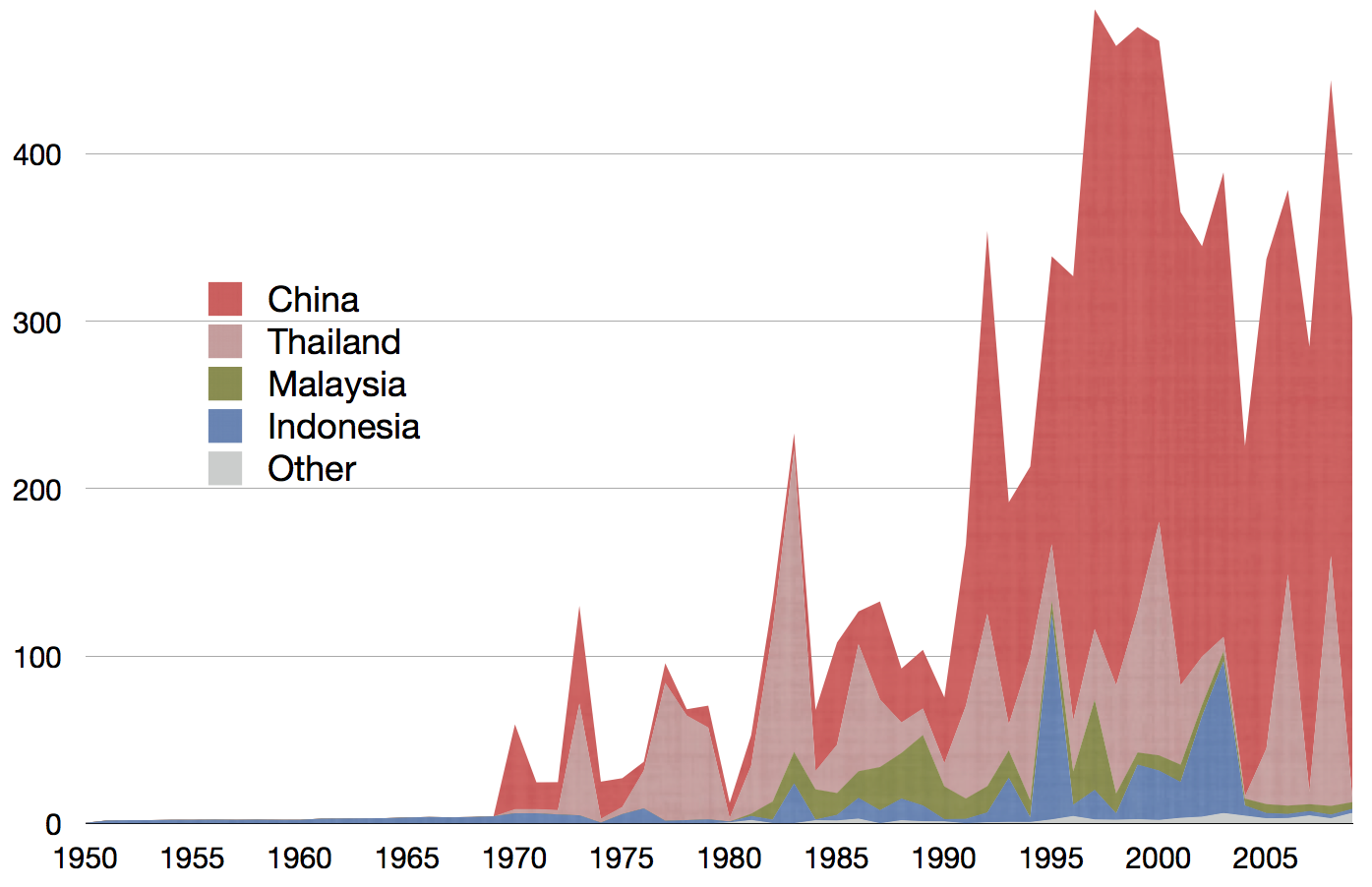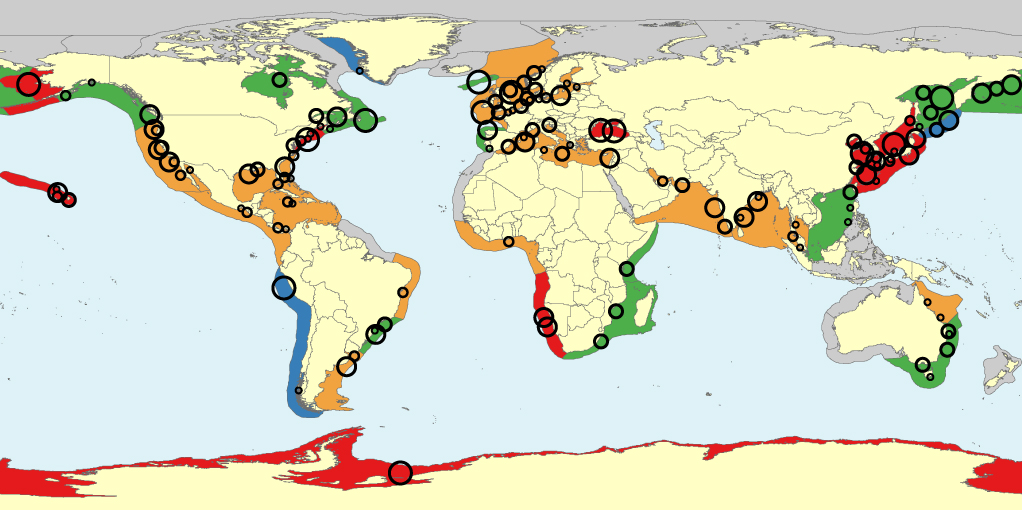“Will we soon be forced to eat jellyfish? Since the beginning of the 2000s, these gelatinous creatures have invaded many of the world’s seas, like the Japan Sea, the Black Sea, the Mediterranean Sea, etc. Is it a cyclic phenomenon, caused by changes in marine currents or even global warming? Until now, the causes remained unknown. A new study conducted by the Institut de recherche pour le développement in France and its partners, published in Bulletin of Marine Science, exposes overfishing as the main factor” (source).
“Jellyfish or jellies are the major non-polyp form of individuals of the phylum Cnidaria. They are typified as free-swimming marine animals consisting of a gelatinous umbrella-shaped bell and trailing tentacles. The bell can pulsate for locomotion, while stinging tentacles can be used to capture prey. Jellyfish are found in every ocean, from the surface to the deep sea. A few jellyfish inhabit freshwater. Large, often colorful, jellyfish are common in coastal zones worldwide. Jellyfish have roamed the seas for at least 500 million years and possibly 700 million years or more, making them the oldest multi-organ animal” (source).
While some scientists argue that there isn’t enough long-term data to conclude that global jellyfish numbers are on the rise, news coverage about their recent impacts on ecosystems and human infrastructure have definitely been on the rise: “Jellyfish adversely affect humanity by interfering with public systems and harming swimmers. The most obvious consequences are human injury or death and reduced coastal tourism. Jellies destroy fish nets, poison or crush captured fish, and consume fish eggs and young fish. Jellyfish can clog cooling equipment, disabling power plants in several countries. Jellyfish caused a cascading blackout in the Philippines in 1999, as well as damaging the Diablo Canyon Power Plant in California in 2008. Clogging can stop desalination plants, as well as clogging ship engines and infesting fishing nets” (source).
“Perhaps the most extraordinary [jellyfish] blooms have been those occurring in waters off Japan. There, refrigerator-sized gelatinous monsters called Nomuras, weighing 485lb (220 kg) and measuring 6.5ft (2m) in diameter, have swarmed the Japan Sea annually since 2002, clogging fishing nets, overturning trawlers, and devastating coastal livelihoods. These assaults have cost the Japanese fisheries industry billions of yen in losses.
Marine ecologists are warning of worse to come and are pointing the tentacle of blame at us. Some researchers fear that human changes to the marine environment may be leading to a tipping point in which jellyfish will rule the oceans, much as they did hundreds of millions of years ago in pre-Cambrian times. In 2009, Australian marine scientist Anthony Richardson and his colleagues published a research paper entitled “The jellyfish joyride,” in which they warn that if we do not act to curb current blooms, we will experience runaway populations that will cause open oceanic ecosystems to flip from ones dominated by fish biodiversity to ones dominated by jellyfish.” (source).
If we can’t beat them, we can, at least, eat them. “In some countries, such as Japan, jellyfish are known as a delicacy. “Dried jellyfish” has become increasingly popular throughout the world. The jellyfish is dried to prevent spoiling; if not dried they can spoil within a matter of hours. Once dried, they can be stored for weeks at a time. Only scyphozoan jellyfish belonging to the order Rhizostomeae are harvested for food; about 12 of the approximately 85 species. Most of the harvest takes place in Southeast Asia. In China, processed jellyfish are desalted by soaking in water overnight and eaten cooked or raw. The dish is often served shredded with a dressing of oil, soy sauce, vinegar, and sugar, or as a salad with vegetables.In Japan, cured jellyfish are rinsed, cut into strips, and served with vinegar as an appetizer” (Wikipedia: Ibid.).
“Jellyfish is relished as a delicacy in Asian countries like China, Japan, Malaysia, Korea, and Thailand. While jellyfish do not have any particular flavor of their own, the dishes are made delectable by adding various spices and sauces. Shredded jellyfish is a common delicacy at Chinese weddings, and dried jellyfish is often found in the famous Japanese dish: ‘sushi’. Jellyfish burgers are also new dishes available in some restaurants. Chinese and Thai supermarkets keep fresh (salad form) and salted jellyfish for people to buy” (source).
Editor’s note: If you’re interested in cashing in on this foodie trend, check out the wholesale prices at http://www.alibaba.com/showroom/dried-jellyfish.html. But if you’d settle for seeing rather than sampling the critters, check out the jellyfish exhibit at the Ty Warner Sea Center on Stearns Wharf in Santa Barbara.
Article by Bill Norrington






